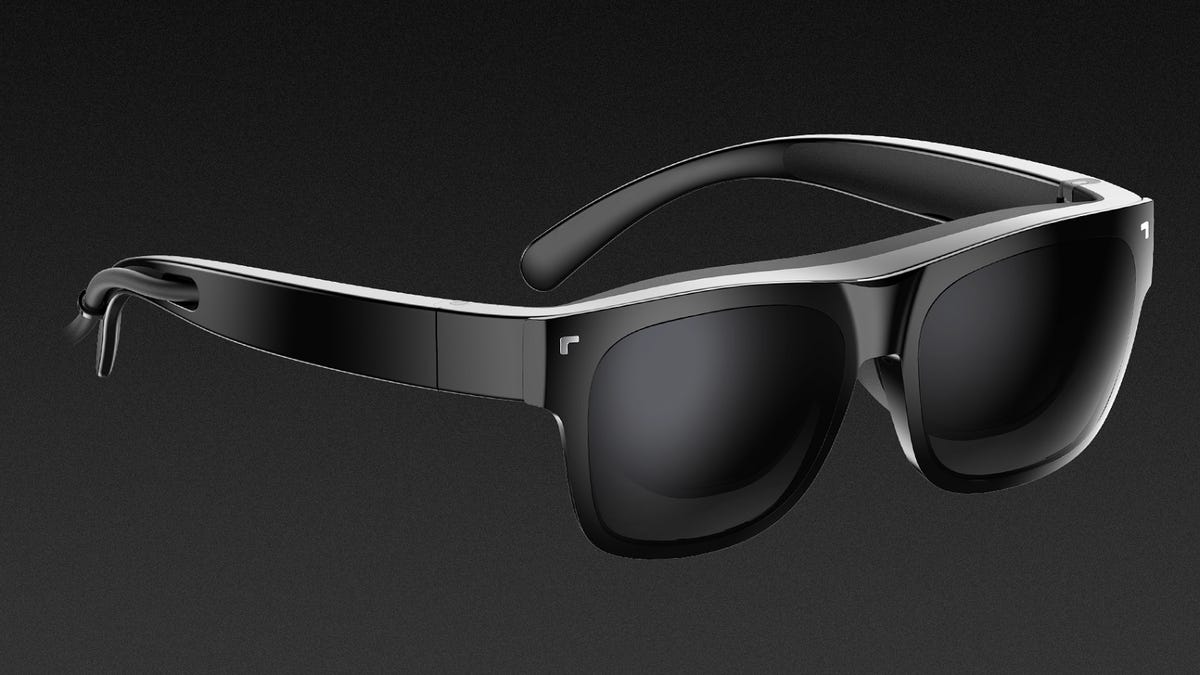TCL's new TV glasses at CES 2022 are actually kind of stylish
A wearable display that looks more like RayBans.

TCL NXTWear Air glasses are a wearable display that plugs into devices via a USB-C cable (seen coming from the right temple).
If you'd rather wear your TV on your face than put it in your living room, TCL might have just what you need at CES 2022. On Tuesday the company revealed its next pair of TV glasses, which refines last year's model to look more like everyday sunglasses.
While they aren't augmented reality glasses, the TCL NXTWear Air can plug into pretty much any device and serve as an external monitor, ideal for working or watching media while lounging on the couch. The new glasses aren't functionally different from the original NXTWear, but thanks to a lighter design, they look more like RayBan Wayfarers than the original model, which resembled IMAX 3D glasses of yesteryear.
TCL will announce pricing and availability closer to Mobile World Congress in February, but company officials said the glasses are coming to the US at some point. The original NXTWear had select releases in Japan, Korea and Australia and were often sold alongside content subscriptions -- in one country, for example, they were bundled with premium sports channel services.
The NXTWear Air has a pair of 1080p displays in 16:9 ratio commonly seen in televisions and displays, and they sit close enough to the eyes that using them is about the same as watching a 140-inch screen from a couch. Their basic 60Hz refresh rate won't satisfy anyone used to playing games at 90 frames per second or greater, though the Air is compatible with over 100 smartphones and devices. At just over 2.6 ounces, the Air weighs half that of most phones and far less than the 4.6 ounces of the first version.
The Air glasses certainly look like modern black plastic sunglasses, with magnetic front plates and tinted lenses that you can swap out for different styles. Conspicuously thicker temples similar to the Amazon Echo Frames suggest there's more going on than your usual shades, but it's the black USB-C cable poking out of the right side that gives the Air away as a tech gadget (a necessity given there's no onboard battery). The sound coming from the dual speakers will tip off anyone else in the room, too.
That TCL made a second version of the glasses suggests it believes consumers want alternatives to traditional displays typically mounted on desks, stands or walls. As the world approaches the second year of lockdowns and work-from-home conditions, it makes sense to offer a different way to engage with work and play.
There's another reason TCL has doubled down on the NXTWear: it's paving the way for its cross reality (XR) glasses, which the company is also revealing at CES 2022. Developing the Air has led TCL to lighter and more ergonomic tech-filled glasses, as well as fiddling with appearance to get a fashionable design that consumers will actually wear. A better fit is huge, something that consumers will grapple with during the incoming wave of smart glasses, which may not even work with prescription lenses, either.
The XR glasses will be more of a generational leap from the NXTWear Air as an external display to a mobile headset filled with chipsets and batteries that process AR and potentially VR on the device. TCL has plenty of questions left, but some of them may be answered by how consumers react to the Air.

